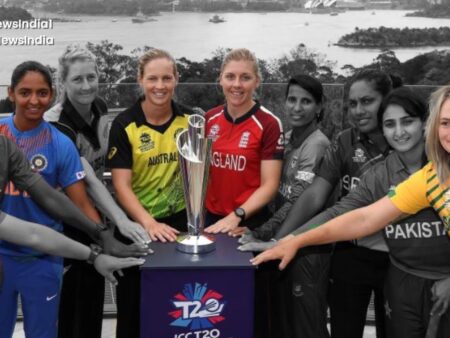
The world of professional tennis is a relentless crucible, particularly for its burgeoning talents. Every season introduces a fresh wave of prodigies, each lauded for their precocious skill and projected to be the `next big thing`. Among these shining lights, Russia`s Mirra Andreeva has captivated audiences with her powerful game and impressive composure at such a tender age. Her meteoric rise through the WTA rankings has been nothing short of spectacular, placing her firmly in the spotlight.
However, the journey to sustained top-tier performance is rarely a straight line. As recently highlighted by Shamil Tarpischev, President of the Russian Tennis Federation, Andreeva`s path to solidifying a spot in the WTA Top 5, or even reclaiming it, hinges not merely on her strokes, but on a more intricate interplay of factors: her psychological state and the strategic management of her tournament calendar.
The Inevitable `Growth Problem`: Navigating the Peaks and Valleys
Tarpischev`s observation of Andreeva experiencing a “growth problem” offers a poignant insight into the realities of elite sport. For an 18-year-old athlete, this isn`t a critique of performance but an acknowledgment of a natural developmental phase. It encompasses a multitude of challenges: physical maturation requiring adjustments to training and play style, the sheer intensity of constant travel and competition, and the evolving demands on one`s game as opponents adapt.
Consider the abrupt shift from junior circuits, where a player might dominate, to the professional arena, where every opponent is a seasoned professional. The novelty of success can quickly give way to the grind. It`s an almost universal experience for young champions, a period where the body and mind catch up to the burgeoning talent. The current slight dip in WTA ranking—a move from fifth to sixth among Russian players—is less a setback and more a data point in this complex, ongoing development.
The Mental Marathon: Beyond Forehands and Backhands
Perhaps the most understated yet critical component of a tennis player`s success is their mental fortitude. The psychological pressure on a young athlete, thrust into the unforgiving glare of international competition, is immense. Every match is scrutinized, every loss amplified, and every expectation carries the weight of a nation or an entire fan base. It`s a paradox: the same talent that propels them forward can also create an overwhelming burden of expectation.
Tarpischev`s emphasis on preventing “psychological overload” is a stark reminder that even the most talented individuals are not immune to burnout. The continuous cycle of high-stakes matches, the constant need for focus, and the isolation that often accompanies life on tour can chip away at even the strongest resolve. Mastering the art of managing these internal battles, maintaining composure under duress, and rebounding from defeat are as vital as mastering any serve or volley. It`s a mental marathon, often run in solitude, where the finish line keeps moving.
The Calendar Conundrum: The Art of Strategic Scheduling
Another pivotal element highlighted is the “reasonable calendar.” This isn`t just about scheduling flights; it`s a profound strategic decision that can make or break a career. For a young player like Mirra Andreeva, the temptation to play every tournament to climb the WTA ranking ladder is strong. More tournaments mean more opportunities for points, more prize money, and more visibility.
However, an overzealous schedule carries significant risks: increased likelihood of injuries, physical fatigue leading to diminished performance, and precisely the “psychological overload” mentioned earlier. A judicious calendar involves careful consideration of recovery periods, training blocks, and selecting events that align with the player`s current development stage and long-term goals. It`s a delicate balancing act between gaining experience and preserving the athlete`s longevity, a decision that often requires the wisdom of seasoned coaches and advisors. The goal isn`t just to play, but to play optimally and sustainably.
The Path Forward for Mirra Andreeva and Future Stars
Tarpischev`s belief that Andreeva “objectively plays like a top-5” player underscores her immense potential. Her current position, however, serves as a valuable learning opportunity—a crucible for growth. The insights from such experienced figures in tennis reinforce a universal truth: raw talent is merely the entry ticket. The sustained journey to the summit of professional tennis demands meticulous strategic planning, a robust psychological framework, and an unwavering commitment to holistic athlete development.
For Mirra Andreeva, and indeed for any rising star in the demanding world of professional sports, the path forward is clear: it involves a continuous dialogue between ambition and prudence, between pushing boundaries and respecting limits. The ultimate measure of success won`t just be the number on her ranking, but her ability to navigate these complex challenges with grace, resilience, and strategic intelligence. The tennis world eagerly watches, not just for her next victory, but for the blossoming of a talent wisely nurtured.










